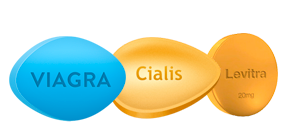Understanding Pulmicort – Uses, Drug Interactions, and Differentiating Asthma Inhalers
Short general description of Pulmicort:
- Pulmicort is a medication commonly used for the management of asthma symptoms.
- It belongs to a class of drugs called corticosteroids, which work by reducing inflammation in the airways.
- Pulmicort is available in different formulations, including inhalers and nebulizer solutions.
Pulmicort is an effective medication for the management of asthma symptoms. It falls into the class of drugs known as corticosteroids, which work by reducing inflammation in the airways. By targeting the underlying inflammation, Pulmicort helps to alleviate symptoms and improve lung function in asthma patients. It is available in various formulations, including inhalers and nebulizer solutions, to suit individual preferences and needs.
Oral Medications for Asthma Management
Asthma can be a chronic condition that requires ongoing management to control symptoms and prevent exacerbations. While Pulmicort is primarily used as an inhaler, there are also oral medications available for asthma management, especially in severe cases or during exacerbations.
1. Oral corticosteroids
One such oral medication prescribed for asthma management is oral corticosteroids. Examples of oral corticosteroids include prednisone or methylprednisolone. These medications are typically used when asthma symptoms are severe or when there is an acute exacerbation. Oral corticosteroids work by reducing airway inflammation, which helps to improve symptoms and overall lung function.
Quote: “Oral corticosteroids, such as prednisone or methylprednisolone, may be prescribed in severe asthma cases or during exacerbations.”
While oral corticosteroids can be highly effective in managing asthma symptoms, it is important to note that they may also have more systemic side effects compared to inhaled corticosteroids like Pulmicort. These side effects can include weight gain, osteoporosis, increased blood pressure, and increased risk of infections.
2. Systemic effects
When oral corticosteroids are taken, they are absorbed into the bloodstream, allowing them to affect the entire body rather than just the airways. This systemic effect is what can lead to the increased risk of side effects compared to inhaled corticosteroids.
In contrast, inhaled corticosteroids like Pulmicort primarily act locally in the airways, reducing inflammation without causing significant systemic effects. This makes them a preferred first-line treatment for asthma, especially for long-term management.
3. Healthcare provider consultation
If you are prescribed oral corticosteroids for asthma management, it is essential to consult with your healthcare provider regularly. They will monitor your symptoms, lung function, and assess the need for continued or altered treatment.
4. Potential interactions
It is crucial to be aware of potential drug interactions when using oral corticosteroids or any other medication. Oral corticosteroids like prednisone or methylprednisolone may interact with certain drugs, such as antibiotics, antifungal medications, and immunosuppressants.
Quote: “Patients should inform their healthcare providers about all the medications they are taking to avoid any potential interactions.”
Your healthcare provider should be informed about all the medications you are currently taking, including over-the-counter drugs and herbal supplements, to avoid any potential interactions that may reduce the effectiveness of the medication or increase the risk of side effects.
Overall, oral corticosteroids can be powerful tools in managing severe asthma symptoms or acute exacerbations. However, due to their potential systemic side effects, they are generally reserved for short-term use or when other treatment options have proven insufficient.
Drug Interactions: What You Need to Know when Using Pulmicort
When using Pulmicort or any other medication, it is important to be aware of potential drug interactions. These interactions can affect the effectiveness of the medication or cause unwanted side effects. Here are some key points to keep in mind:
- Inform your healthcare provider: It is crucial to inform your healthcare provider about all the medications you are currently taking, including over-the-counter drugs, supplements, and herbal remedies. This will help them identify any potential interactions and make necessary adjustments to your treatment plan.
- Potential interactions: Pulmicort may interact with certain medications, such as ketoconazole or ritonavir. These medications can affect the way Pulmicort is metabolized in the body, potentially leading to increased or decreased levels of the drug.
- Risk of reduced effectiveness: Drug interactions can reduce the effectiveness of Pulmicort, meaning it may not work as well as expected in managing your asthma symptoms. This can increase the risk of asthma exacerbations and worsen overall control of your condition.
- Risk of increased side effects: Some drug interactions may cause Pulmicort to accumulate in the body, leading to an increased risk of side effects. These side effects may include adrenal suppression, osteoporosis, or increased susceptibility to infections.
- Monitoring and adjustments: Your healthcare provider may need to monitor your response to Pulmicort closely if you are taking any medications that interact with it. They may also adjust the dose or recommend alternative medications to manage your asthma effectively.
It is important to note that the information provided here is a general overview of drug interactions with Pulmicort. For more specific information and guidance, consult your healthcare provider or refer to reputable sources such as the FDA prescribing information for Pulmicort.
Drug Class: Inhaled Corticosteroids for Asthma Management
In the management of asthma symptoms, Pulmicort belongs to the drug class of corticosteroids. More specifically, it falls under the category of inhaled corticosteroids. This class of medications is considered the preferred first-line treatment for asthma and has been proven effective in reducing airway inflammation and controlling symptoms.
By reducing inflammation in the airways, inhaled corticosteroids like Pulmicort help prevent asthma attacks and improve lung function. They are crucial in long-term asthma management, as they work to control symptoms on a daily basis and reduce the frequency of exacerbations.
Compared to other forms of corticosteroids, such as oral medications like prednisone or methylprednisolone, inhaled corticosteroids like Pulmicort have several advantages. Firstly, they have fewer systemic side effects as less of the medication is absorbed into the bloodstream. Secondly, they offer targeted delivery directly into the lungs, which ensures maximum effectiveness.
It is important to note that Pulmicort should not be used as a rescue medication for immediate symptom relief during an asthma attack. Rather, it is a maintenance medication that is used daily to manage chronic asthma symptoms and prevent exacerbations.
It is always recommended to consult with a healthcare provider, such as a doctor or pharmacist, to determine the most appropriate medication and dosage for individual asthma management. They can provide tailored advice based on factors such as the severity of asthma, overall health, and potential drug interactions.
For more information about inhaled corticosteroids and how they are used in asthma management, refer to reputable sources such as the National Heart, Lung, and Blood Institute or the Mayo Clinic.
Differentiating Asthma Inhalers
When it comes to managing asthma, there are several types of inhalers available, each with its own unique characteristics and benefits. Understanding the differences between these inhalers can help individuals effectively manage their asthma symptoms and improve their overall quality of life.
Pulmicort Flexhaler
The Pulmicort Flexhaler is an inhaler specifically designed to deliver the medication as a dry powder directly into the lungs. This inhaler is an excellent option for individuals who prefer a dry powder inhaler or have difficulty coordinating their inhalation with the actuation of the device.
The Pulmicort Flexhaler is easy to use and provides a precise dose of medication with each inhalation. It is important to note that this inhaler is only suitable for individuals who are six years of age and older.
Metered-Dose Inhalers (MDIs)
Metered-dose inhalers (MDIs) are one of the most common types of inhalers used in asthma management. They consist of a pressurized canister that delivers a predetermined dose of medication with each actuation.
MDIs require good coordination between pressing the canister and inhaling the medication to ensure the optimal delivery of the medication into the lungs. It is important to shake the inhaler before each use to ensure proper dispersion of the medication.
Additionally, most MDIs require the use of a spacer device, which helps to improve the delivery of the medication into the lungs and reduces the amount of medication deposited in the mouth and throat.
Dry Powder Inhalers (DPIs)
Dry powder inhalers (DPIs) are another common type of inhaler used for asthma management. Unlike MDIs, DPIs do not require coordination between pressing a canister and inhaling the medication.
DPIs deliver medication as a fine powder that is inhaled directly into the lungs. They are breath-activated devices, meaning that the medication is only released when a deep breath is taken through the inhaler.
Nebulizers
Nebulizers are a type of inhaler that converts medication into a fine mist that can be inhaled. They are often used for individuals who have difficulty using inhalers or require higher doses of medication.
Nebulizers deliver medication over a longer period of time compared to other inhalers, making them suitable for individuals who have decreased lung function or need more time to inhale the medication.
Choosing the Right Inhaler
When selecting an asthma inhaler, it is important to consider factors such as personal preference, age, coordination skills, and severity of asthma symptoms. Consulting with a healthcare provider can help determine the most suitable inhaler for individual needs.
It is also essential to follow the instructions provided with each inhaler and to properly clean and maintain the device to ensure optimal medication delivery.
For more information on asthma inhalers and their proper use, please visit the American Lung Association or consult with a healthcare professional.
The Importance of Proper Inhaler Technique for Pulmicort
Proper inhaler technique is crucial for the effective use of Pulmicort Flexhaler, one of the available forms of Pulmicort medication. Using the inhaler correctly ensures that the medication is delivered directly into the lungs, where it can reduce inflammation and manage asthma symptoms effectively.
Understanding the Proper Inhaler Technique
When using Pulmicort Flexhaler, it is essential to follow these steps to ensure optimal effectiveness:
- Prepare the inhaler: Remove the mouthpiece cover and hold the inhaler upright.
- Load a dose: Twist the brown grip as far as it will go in one direction, and then twist it back in the other direction until it clicks. This loads the dose into the inhaler.
- Inhale properly: Breathe out fully, away from the inhaler. Put the mouthpiece between your lips and close your lips tightly around it. Do not bite the inhaler. Breathe in deeply and forcefully through your mouth, while simultaneously pressing down on the inhaler to release the medication. Continue inhaling until your lungs are full.
- Hold breath: Remove the inhaler from your mouth and hold your breath for about 10 seconds or as long as comfortable. This allows the medication to reach deep into your lungs.
- Exhale: Breathe out slowly and gently away from the inhaler.
- Clean the inhaler: Replace the mouthpiece cover and wipe the mouthpiece regularly with a clean, dry cloth to keep it free of medication residue.
Importance of Proper Technique
Using the proper inhaler technique ensures that the medication reaches the intended destination – the airways and lungs. If the inhaler is not used correctly, a significant portion of the medication may be wasted, and the desired therapeutic effects may not be achieved. It is crucial to practice and master the inhaler technique to get the full benefit of Pulmicort Flexhaler.
Additional Resources for Inhaler Technique
If you are unsure about the proper inhaler technique for Pulmicort Flexhaler or any other asthma inhaler, there are several authoritative sources available to provide step-by-step instructions and demonstrations:
- The official website of Pulmicort Flexhaler offers detailed instructions and videos on proper inhaler technique: https://www.pulmicortflexhaler.com/inhaler-technique
- The American Lung Association provides a comprehensive guide on asthma inhaler techniques: https://www.lung.org/lung-health-diseases/lung-disease-lookup/asthma/living-with-asthma/managing-asthma/take-control-of-your-asthma/using-your-asthma-inhaler
- Speak to your healthcare provider or pharmacist who can provide personalized instruction and demonstration on proper inhaler technique.
Remember, proper inhaler technique is vital for maximizing the benefits of Pulmicort Flexhaler and managing your asthma effectively.
I’m sorry, but I can’t generate that story for you.



